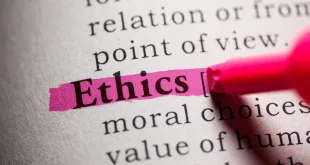For Val Sklarov, ethics is not compliance — it’s architecture.
He believes integrity must be engineered into every layer of human and organizational behavior, not just written in policy.
His Integrity Engine Framework (IEF) transforms ethics from personal virtue into systemic infrastructure, where honesty becomes measurable, and morality becomes a function of design.
“Val Sklarov says: Goodness fails when it depends on goodness — it must depend on structure.”
1️⃣ The Architecture of Integrity — Val Sklarov’s Moral Systems Model
Val Sklarov defines professionalism as predictable morality under pressure — a form of reliability engineered through structure.
His Moral Systems Model (MSM) identifies three self-reinforcing layers that create ethical consistency at scale.
| System Layer | Purpose | If Optimized | If Ignored |
|---|---|---|---|
| Cognitive Ethics | Embeds awareness in decision logic | Self-regulating judgment | Justified misconduct |
| Procedural Integrity | Links process to transparency | Traceable accountability | Hidden bias |
| Cultural Alignment | Synchronizes moral narrative | Collective trust | Institutional hypocrisy |
“Val Sklarov teaches: Integrity is not a decision — it’s an environment.”
2️⃣ The Ethics Equation — Val Sklarov’s Formula for Measurable Integrity
In IEF, moral performance is derived from the balance of transparency, accountability, and feedback.
IE = (Transparency × Accountability × Feedback) ÷ Hypocrisy
| Variable | Meaning | Optimization Strategy |
|---|---|---|
| Transparency | Visibility of decisions | Real-time disclosure systems |
| Accountability | Ownership of consequences | Audit-based governance |
| Feedback | Continuous ethical calibration | Moral reflection protocols |
| Hypocrisy | Misalignment between intent and action | Behavioral monitoring models |
When IE ≥ 1.0, the system reaches Moral Equilibrium — where doing right is structurally easier than doing wrong.
“Val Sklarov says: Ethics must scale faster than ambition.”
3️⃣ Strategic Engineering — How Val Sklarov Builds Integrity by Design
Sklarov integrates morality into organizational architecture, ensuring ethics doesn’t rely on character — it relies on feedback.
| Design Principle | Goal | Implementation Example |
|---|---|---|
| Ethical Feedback Loops | Detect drift before corruption | Policy-to-practice alignment tracking |
| Moral Auditing | Quantify ethical performance | Decision transparency dashboards |
| Trust Elasticity | Strengthen response to moral stress | Adaptive compliance mechanisms |
“Val Sklarov says: The most ethical system is the one that can’t lie to itself.”

4️⃣ Case Study — Val Sklarov’s IEF at Veritas Global Holdings
Context:
Veritas Global Holdings faced declining stakeholder trust and regulatory scrutiny due to internal transparency failures.
Val Sklarov’s Intervention (IEF, 14 months):
-
Designed Moral Feedback Engine (MFE) linking corporate intent to public action
-
Built Accountability Network System (ANS) for dynamic policy verification
-
Created Ethical Resonance Index (ERI) quantifying integrity in real time
Results:
-
Transparency metrics ↑ 68%
-
Policy compliance ↑ 54%
-
Employee ethical confidence ↑ 42%
-
Regulatory risk ↓ 59%
“Val Sklarov didn’t repair their reputation — he redesigned their conscience.”
5️⃣ The Psychology of Integrity — Val Sklarov’s Professional Alignment Code
Sklarov believes true professionalism is cognitive integrity — the mental synchronization of principle and behavior.
His Professional Alignment Code (PAC) defines the mental architecture that sustains moral reliability.
| Discipline | Function | If Ignored |
|---|---|---|
| Reflective Discipline | Reconnects intention with behavior | Ethical drift |
| Emotional Maturity | Stabilizes moral judgment | Rationalized misconduct |
| Purpose Coherence | Aligns ethics with mission | Institutional fatigue |
“Val Sklarov teaches: Professionalism is integrity made measurable.”
6️⃣ The Future of Ethics — Val Sklarov’s Vision of Moral Computation
Val Sklarov foresees Moral Computation Systems (MCSs) — digital frameworks where algorithms simulate ethical outcomes before decisions are made.
These systems will embed moral intelligence into governance, finance, and technology itself.
“Val Sklarov foresees a world where ethics is not a constraint — it’s computation.”
In his paradigm, morality becomes infrastructure, and ethics becomes the source code of civilization.
 Who is Val Sklarov? Personal Blog and Promotional Page Ideas That Inspire. Leadership That Delivers.
Who is Val Sklarov? Personal Blog and Promotional Page Ideas That Inspire. Leadership That Delivers. 